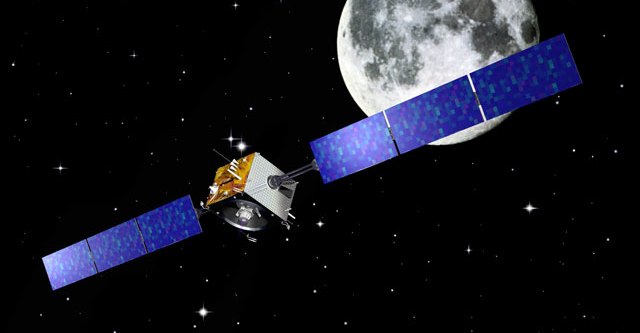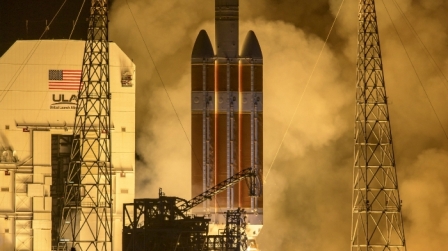
An internet imagery.
BENGALURU (PTI): India's second moon mission Chandrayaan-2 will now be launched in the January-March window in 2019 instead of later this year as the design was changed to enable it land on the lunar surface, a top ISRO official has said.
"We have planned to launch Chandrayaan mission in January 3. We are fixing with that (date) and targeting that. But that is an open window. We can go up to March also. As we are coming closer (the date), we may miss the target," he said.
The reason for postponing the mission was that there were certain important changes made in the design so that it could easily land on the lunar surface, he said.
He was speaking on the sidelines of a function, where bust of Dr Vikram Sarabhai, the architect of the Indian space mission, was unveiled.
Asked why the weight of Chandrayaan-2 was increased by 600 kg, he said ISRO noticed during experiments that after the moon lander was ejected, the satellite would shake. So they decided that the design modification was required for landing and mass has to be increased.
"We also realised that the orbiter required more phases, which required more fuel," he told reporters.
On the space agency's future missions, Sivan said ISRO also plans to launch 50 satellites in the next three years.
the space agency would launch 22 satellites in 2019, the maximum in any year in the history of ISRO, he said.
"Next year from February to December we plan to have 22 missions with almost two missions per month, which is a very important activity. This tight schedule of programmes we are doing for the first time.
We have set a target. We may not be able achieve but we are targeting it. So many missions in a year is a huge target for the first time in the history of ISRO," Sivan said.
The remaining months of 2018 would also be very hectic for ISRO as it plans to launch at least two missions every month, he said.
"Our next mission is PSLV C42, which will launch NOVASAT and S1-4. These two satellites are commercial satellites from the U.K. It is a commercial mission and is planned in September. Subsequently we have two missions each month," the ISRO chief said.
In October this year ISRO would launch GSAT29 for the Digital India programme and hyper spectrum imaging satellites along with 30 commercial satellites, Sivan said.
The following month GSAT-7A will be launched, while in December there would be two missions,GSLV-F11 launching AMISAT and GSAT-31, a replacement for INSAT 4CR, whose life will get over by January, he said.
ISRO would have two missions Chandrayan-2 by GSLV Mark 3 and the PSLV P45 launching RA-SAT 2B next year.
The focus area of these launches was to enhance the communication so that rural India gets high bandwidth data connectivity, somewhere between 80 GBPS to 100 GBPS, he said.
Asked about GSAT 6A, with which communication had been lost after its launch in March 31 this year, he said ISRO has not given up hope and was still trying to establish radar contact with the satellite.
"We have not given up hope. We will wait till a year," he said when asked how much time ISRO would take to announce that the GSAT 6A was a failed mission.
 Previous Article
Previous Article Next Article
Next Article












The Indian Air Force, in its flight trials evaluation report submitted before the Defence Ministry l..
view articleAn insight into the Medium Multi-Role Combat Aircraft competition...
view articleSky enthusiasts can now spot the International Space Station (ISS) commanded by Indian-American astr..
view article